Heritage Trail Location 16
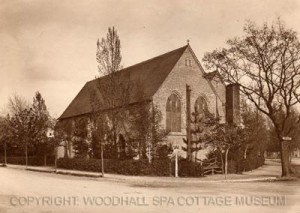
Photo 1 – Early external view of St Peter’s Church, taken from the corner of Iddesleigh Road and the Broadway. (Photo courtesy of Woodhall Spa Cottage Museum).
Towards the end of the nineteenth century the pretty, stone church of St.Andrew (Heritage Trail Location 10), at the crossroads in Woodhall Spa, was too small to accommodate the growing population of the village. This was particularly the case in summer when hundreds of visitors arrived for the Spa Season.
In 1892, a meeting was held in the Chapter House of Lincoln Cathedral to discuss plans for a new building. It was chaired by the Dean of Lincoln and attended by various dignitaries, as well as the Vicar of St. Andrew`s, the Rev H. Benwell, M.A. The architect involved was Mr. Charles Hodgson Fowler, who was responsible for renovations and extensions to many Lincolnshire churches, as well as the construction of new ones, of which St. Peter`s was the last. The well regarded firm, Bowman of Stamford was employed to erect the building. (Photo 1)
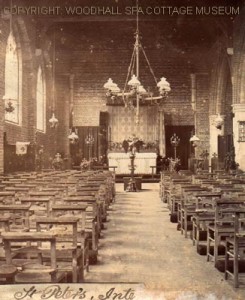
Photo 2 – Interior view of St Peter’s Church before the construction of the Chancel. Note the chairs to seat the congregation and the lack of an East window. (Photo courtesy of Woodhall Spa Cottage Museum).
The foundation stone was laid by Rt. Hon. Edward Stanhope, M.P. for Horncastle, on Easter Tuesday, 11th March 1893 and the new church was licensed by Bishop King of Lincoln, in September of that year.
Constructed of brick, with a wooden floored nave, there was no Chancel, Lady Chapel, Vestry or Organ Loft. The building cost £1,800. There were chairs to seat 500 people, 2 “Tortoise” stoves for heating and the organ was borrowed from St. Andrew`s! (Photo 2)
In succeeding years, Bazaars, Sales of Work and other money raising events were held towards the erection of the Chancel. This was completed, with a large, plain East window, in 1904, although the debt still stood at £350 in 1906. (Photo 3)
It was not until 1915 that St. Peter`s was legally designated the Parish Church of Woodhall Spa, in place of St. Andrew`s.
On entering the building, visitors see a spacious, high vaulted building with panelled walls. The panelling was completed in 1928. There are now pews, carved by the well known local firm, E. Czajkowski and Son, which began to replace the original chairs in 1957.
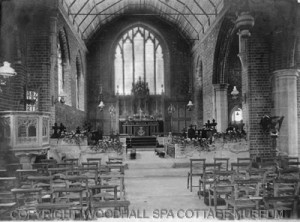
Photo 3 – Interior view of St Peter’s Church, showing the Chancel extension and the installation of the plain East window. (Photo courtesy of Woodhall Spa Cottage Museum).
Looking up the nave, visitors are particularly impressed by the intricately carved Rood Screen at the entrance to the Chancel. (Fig 4) Constructed of oak, it was designed by Mr. W. H. Wood F.R.I.B.A. and executed by Bowman`s at a cost of £800 in 1920. The Reredos behind the altar, also of oak, is decoratively carved in late Gothic style. It was made by H. Hems and Sons of Exeter and presented by the widow of Colonel Cator in memory of her husband, after his death in 1900.
There are several stained glass windows of interest. Permission to replace the large, plain East window was obtained in 1919 and it is now a rich mosaic of deeply coloured glass with a luminous centre of white shot with gold. It depicts Christ surrounded by prophets, apostles and martyrs. Another eye catching window was installed in 2004. It shows St. Peter with fishing net among rippling waves in shades of turquoise and blue. The names of the members of the family in whose memory the window was erected, are cleverly inscribed among the waves.
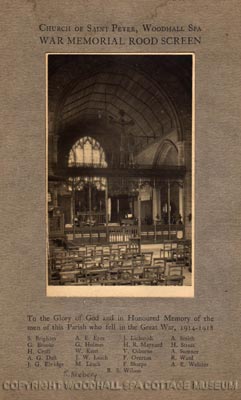
Figure 1 – Cover of the Order of Service for the dedication of the Rood Screen in St Peter’s Church, in memory of those who were killed in World War 1. (Photo courtesy of Woodhall Spa Cottage Museum).
Various plaques on the walls are of interest, including one to Rev. Benwell, who, after the building of St. Peter`s was Vicar of both it and St. Andrew`s for several years. He died in 1918, aged 84.
There is a touching memorial to Capt. Hewson Street, M.C. with Bar, who was killed in battle in 1918, aged 24. Names of other local victims of both World Wars are incorporated in the Rood Screen.
On the West wall is the crest and motto of No. 617 Squadron, R.A.F. Formed at Scampton in March 1943, its mission was to breach 4 dams in Germany, so flooding the vital industrial area of the Ruhr. When the Squadron moved to RAF Woodhall Spa, the Petwood Hotel in Woodhall Spa, became the Officers` Mess for “the Dambusters”. Another R.A.F. memorial is to 619 Squadron which was formed at RAF Woodhall Spa in April 1943. Flying Lancaster bombers, the Squadron took part in major attacks in World War 2. Although disbanded in 1945, the Squadron maintains its connection with the village and presented St. Peter`s with the flagpole outside the church.
Alterations to the building over the years include the construction of stairs to an organ loft, in 1930. The loft housed a hand pumped organ by Jardine of Manchester. Later, no doubt to the relief of several pumpers, an electric organ replaced the original instrument.
A recent innovation was a sound loop system to help the hard of hearing, which was installed in 2002 -2003.
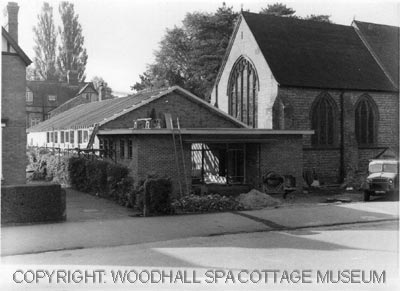
Photo 4 – St Peter’s Church Hall during construction in the early 1960s. (Photo courtesy of Woodhall Spa Cottage Museum).
The original tubular bells were housed in a “bell shelter” at the West end of the church but In the 1930s the bell turret was built at the East end of the building. By the 1960s the bells were described as being “of uncertain sound”!
Also outside the building, the wrought iron gates leading into the church were presented by Mrs. Stafford Vere Hotchkin in memory of her daughter, Faith, who died in 1953. The church hall was built in the early 1960s. (Photo 4) In the year 2000 a tiny yew tree was presented by the Conservationist Society to celebrate the third Christian millennium.
Services in St. Peter`s have marked local and national events. A sober service, with hymns such as, “O God our help in ages past,” was held after the sinking of the Titanic, in 1912. Services of Thanksgiving were held at the end of the General Strike in 1926, at the end of both World Wars and on occasions such as Royal Weddings. A moving service was held in 1943 when 5 local young people drowned when their car plunged into the River Witham.
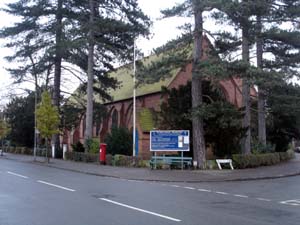
Photo 5 – St Peter’s Church in 2009..
The life of St. Peter`s continues to flourish, with many weekday meetings and activities and a lively children`s sector as well as Sunday services. In addition, there are links with church communities as far away as Africa and the U.S.A.
The doors of the church are open every day for anyone who wishes to look around, or sit quietly, or pray, while both residents of Woodhall Spa and visitors to the area can be assured of a happy welcome at any of the Sunday services.
Marjorie Sargeant
Woodhall Spa Heritage Committee
Heritage Trail locations
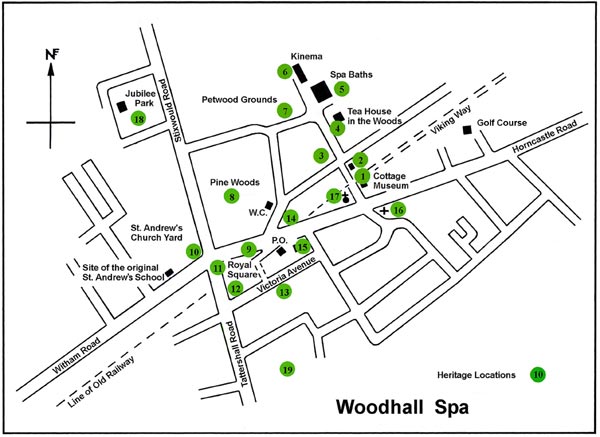
The trail can be started at any location, but we suggest you also visit the Cottage Museum to see the photographs taken by John Wield during the heyday of the Spa and items associated with this unique Victorian Spa town.
The Trail is just one of several projects in the hands of the Woodhall Spa Parish Council sponsored Heritage Committee. Click here if you are interested in the committee or their projects.
How well do you know Woodhall Spa?
See if you can identify the location of these architectural features and items of street furniture
Find out more about the Woodhall Spa Conservation Area